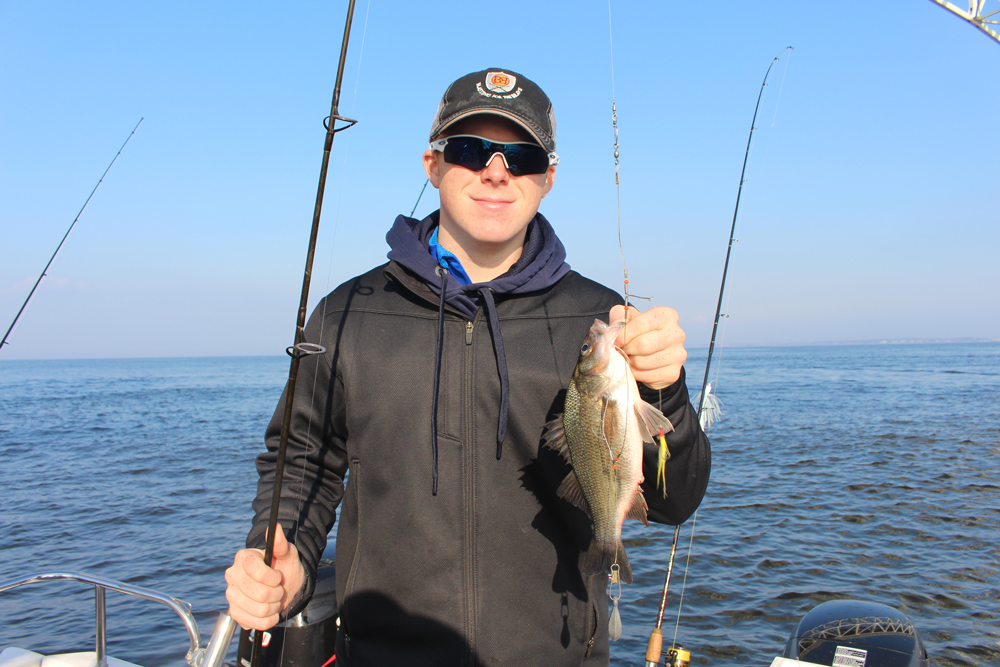Like the yellow perch found in tidal creeks, white perch will bite right through the winter months (even through the ice, when tidal rivers freeze over). But catching them in the winter months is often difficult because the baits they favor, bloodworms and grass shrimp, can become scarce. Yes, they’ll eat (small) bull minnow and a number of frozen baits like clam snouts or peeler crab, but not with nearly the same enthusiasm. That may limit you to lures, and when fishing for whites with artificials, remember these three important tactics that will help you catch perch aplenty.
- Use lures of two inches or less. White perch are accustomed to taking small bites, and small offerings are in order. When you need a lot of weight to get those offerings deep, utilize tandem rigs with a heavier lure (like a Stingsilver) at the bottom, or use a weighted top-and-bottom rig and replace the hooks with small jigs or streamers.
- Give the lures a pause between jigs. During the cold months of the year the fish will be attracted by motion, which catches their eye. But they often won’t actually hit a moving lure. Pause between jigs, and you’ll notice that this is often when you get the strike.
- Fish right on or near bottom. Often the fish will be looking for a depth where the temperature is to their liking (read: the warmest water currently around). When they find it they usually won’t move any deeper, but will sit right on bottom at that particular depth.

BONUS TIP: Expect white perch to shadow the movement of yellow perch, by a matter of a few weeks. If the yellows show up in pre-spawn areas the last week of February, for example, the whites will usually show up around the second week of March. And if the yellows start spawning the second week of March, the whites will usually be just after them, the last week of the month or the first week of April. Be sure to check out our fishing reports, to keep up with where those perch are at any given time during the season.
DOUBLE-BONUS TIP: White perch are tremendous fans of grass shrimp. When you can't get them, you can always buy some shrimp at the seafood store. Use small bits and especially the tail end, which works well as the meat tends to stay in the shell and helps keep it on the hook during casting and bites.